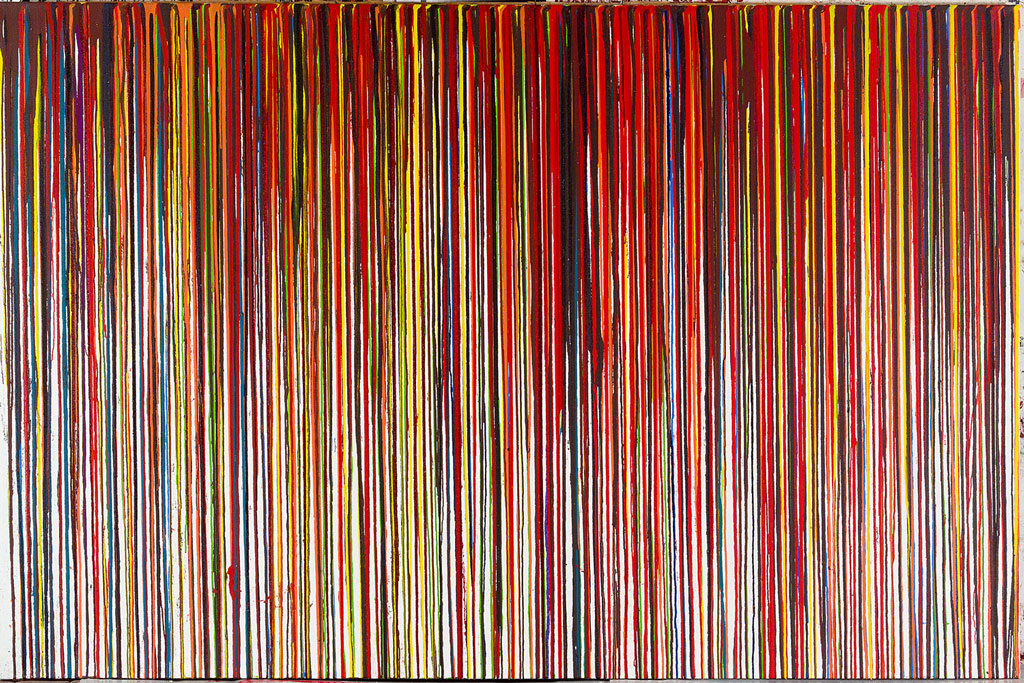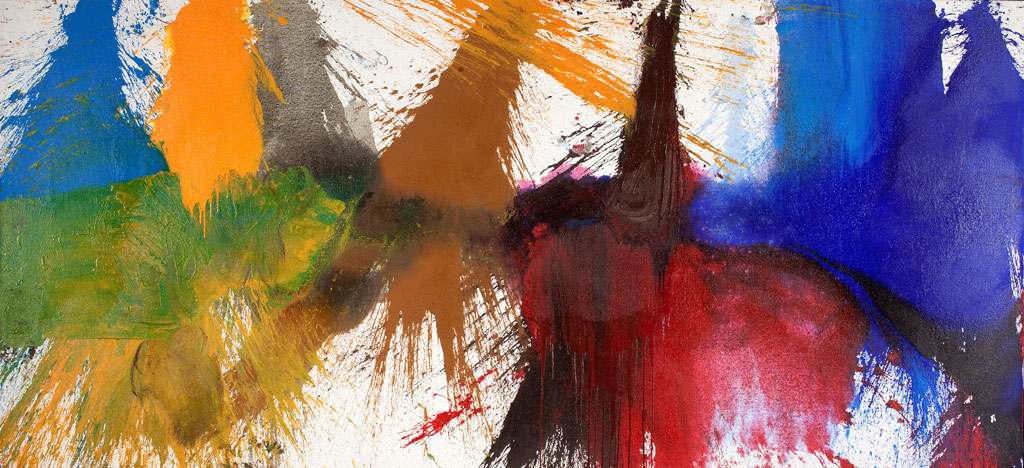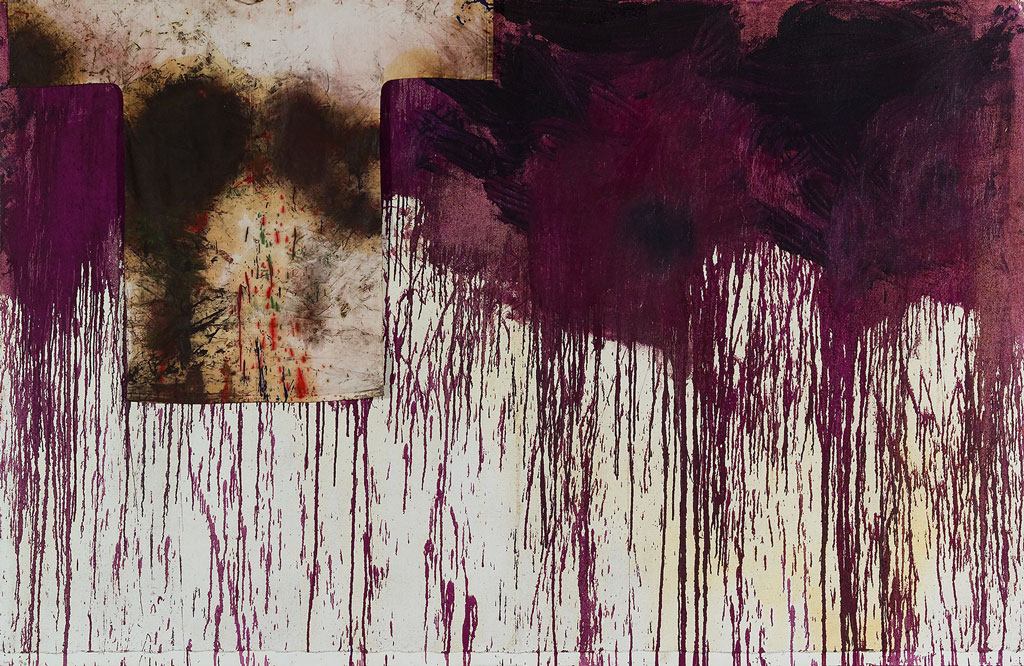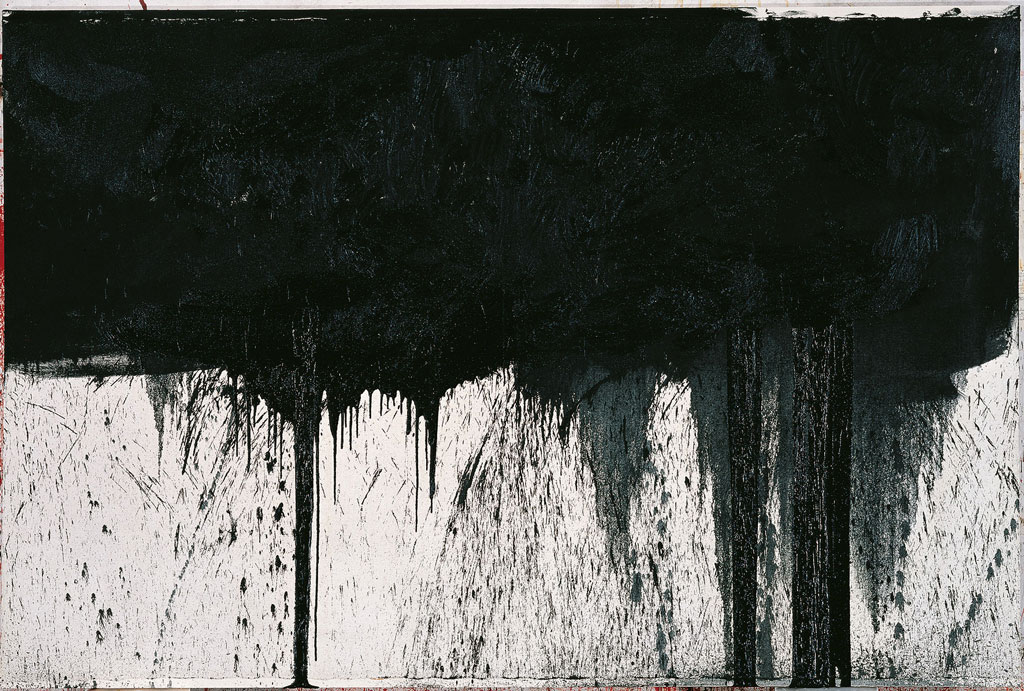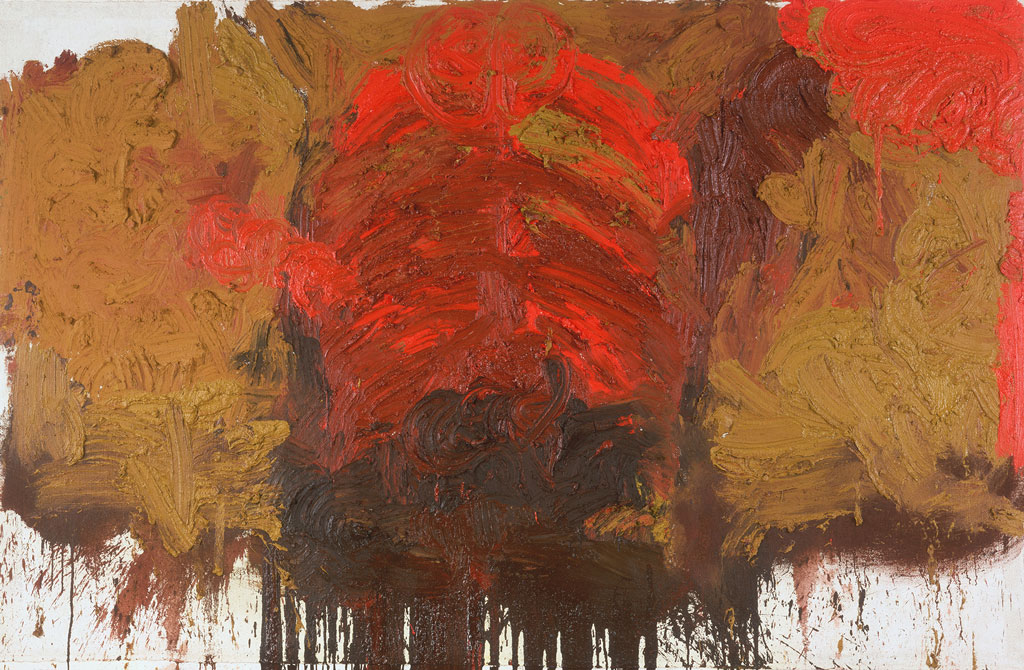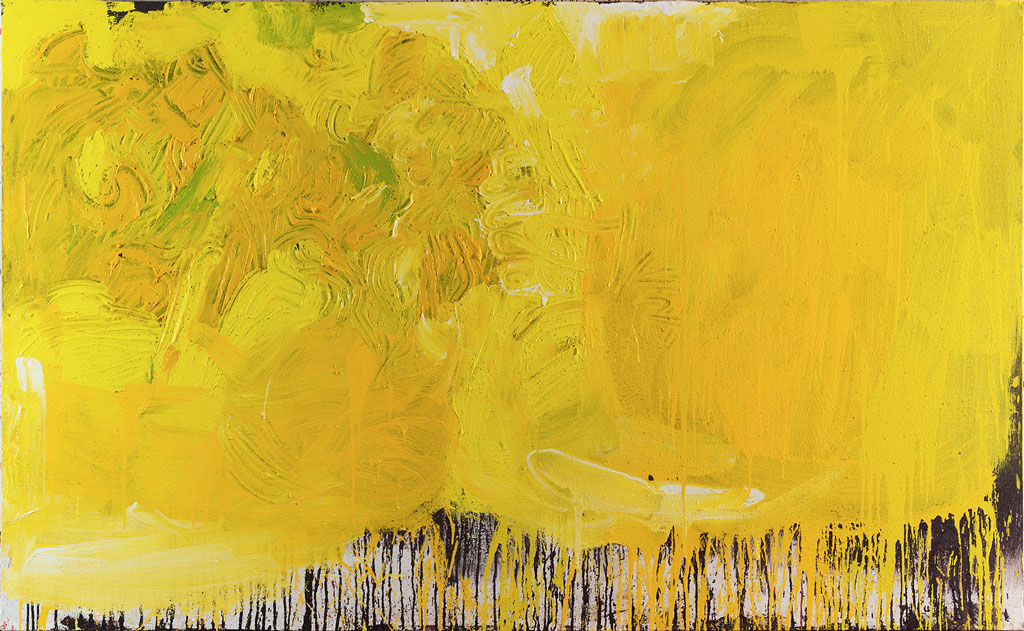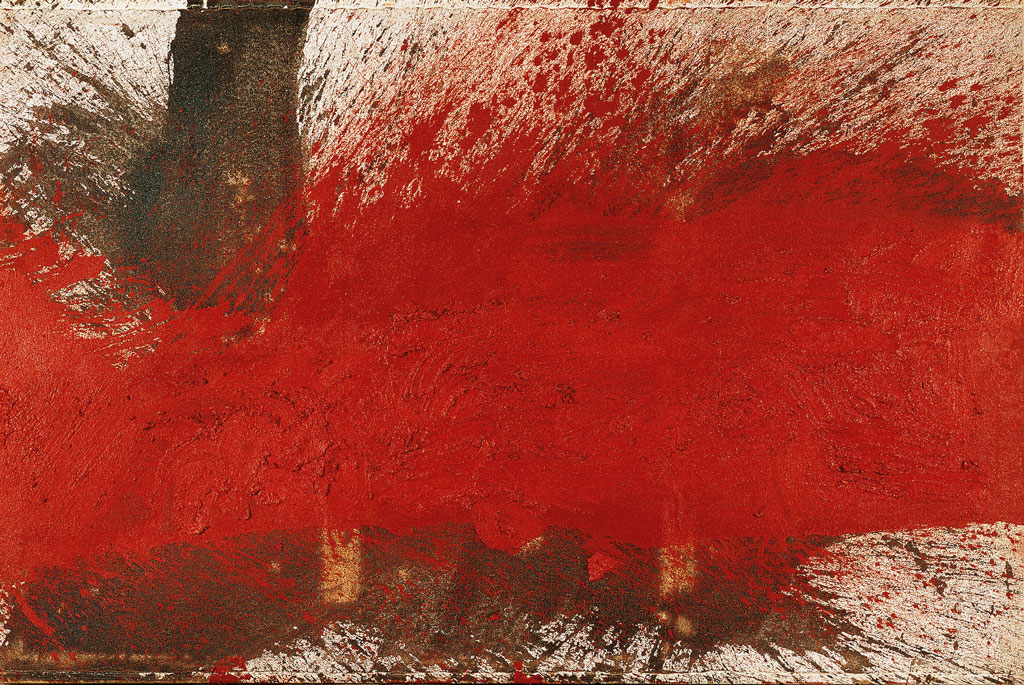ART-PRESENTATION: Hermann Nitsch-Spaces of Color
 Born on 29/8/1936 in Vienna, Hermann Nitsch originally conceived of his action performances after having experienced World War II as child. Interested in the intensity of his memories, he has sought religious themes and customs to convey his emotions since the 1950s. Nitsch’s outrageous works are referred to as Orgies Mysteries Theater and involve blood, animal entrails, and nudity.
Born on 29/8/1936 in Vienna, Hermann Nitsch originally conceived of his action performances after having experienced World War II as child. Interested in the intensity of his memories, he has sought religious themes and customs to convey his emotions since the 1950s. Nitsch’s outrageous works are referred to as Orgies Mysteries Theater and involve blood, animal entrails, and nudity.
By Dimitris Lempesis
Photo: The ALBERTINA Museum Archive
For Hermann Nitsch, painting is one among several disciplines of his Orgies Mysteries Theater. It is deeply rooted in actionism, performance, and multimediality. It is the origin of the Actions and, at the same time, their result. With the exhibition “Spaces of Color”, Hermann Nitsc’s paintings are to be viewed exclusively and separately for the first time, not as part of a larger whole, but as paintings in their own right. This style of painting goes far beyond the dimensions of panel painting, conquers the entire wall, and intervenes in the space as an allencompassing installation. Nitsch’s painting stood at the beginning of the Orgies Mysteries Theater, enabling Nitsch to realize his idea, and with it the basic elements of his theater, initially on the two-dimensional picture plane, before his Actions and Painting Actions expanded to three-dimensional space in front of an audience. Nitsch’s painting focused on the physical handling of color, the expressive gesture, the actionist application of paint, and the bodily acting out. “Blood Organ Painting” (1962): In 1962, together with Otto Muehl and Adolf Frohner, Nitsch wrote the “Blood Organ Manifesto” which today can be regarded as the first theoretical concept of Viennese Actionism. This resulted in the “Blood Organ Action” for which the artists had themselves walled inside Muehl’s basement studio for three days and then presented their newly created output. Frohner and Muehl worked on “Junk Sculptures” and together hung a slaughtered sheep upside down. In the course of this joint performance, Nitsch’s 7th Painting Action took place, during which he executed his first poured painting for which blood was used as a painting medium. “Colored Poured Paintings” (1989): Until well into the late 1980s, Hermann Nitsch worked exclusively with red paint. For him, red is the most intense color of all, standing for blood and flesh, for love and life. In 1989, however, his works became multicolored: “The shock induced by the color red must be heightened further”. Above all, the liturgical colors green, blue, and violet, as well as black and white, were used and applied according to their effect and symbolic meaning. Shortly afterwards the application of paint was also modified. Whereas the artist still used rather thin paint here for these colored poured paintings of 1989, he later switched to an increasingly viscous paint substance, creating pastose, almost relief-like works. “Black Cycle I” (1991): From 1990 to 1992, Hermann Nitsch mainly used black paint in his painting actions, initially applied thinly, then more viscously. As early as 1992, this black phase gradually retracted, and red began to feature in his works once again. In “Black Cycle I” the artist partly poured the paint and partly spread it across the painting support in all directions using his hands. The traces of his fingers can still be seen on the applied paint. A large part of the white primed jute canvas remains visible. In some cases Nitsch has added his painter’s smock, which shows traces of how he has wiped his hands on it. “Poured Floor Paintings” (1995): In 1995, Nitsch’s 37th Painting Action took place at the Kunsthaus in Mürzzuschlag. Nitsch realized his works primarily on the floor, using blood as a painting medium in addition to oil paint. In a first step, the blood was extensively poured over the white primed jute canvas laid out on the floor. In a second step, the artist applied red paint by pouring it and then treating the soft, viscous substance with his hands. Toward the end of the painting action, the entire floor of the room was stained with blood and paint. The walls were densely populated with the newly created poured floor paintings. It was hardly possible to identify individual works – they no longer existed as such. Nitsch’s poured floor paintings have no fixed orientation; they are directionless. Accordingly, they can be presented in various ways, rotated and turned in different directions. Exceptions are those works in which traces of the flowing paint or an attached painter’s smock indicate a top and a bottom. Nitsch’s signature on the reverse side of a painting provides information as to the perspective from which the artist himself prefers to view a particular work. “Cathedral of Colors” (2009): In May 2009, Hermann Nitsch conducted his 56th Painting Action, the largest thus far, at the Nitsch Museum in Mistelbach. Characteristic of the works from the cycle “Cathedral of Colors” are the use of a variety of colors, the dynamism of the creative process, as well as the unusual and varied formats of the paintings: the roughly 700-square-meter exhibition space was lined with fabric and plastic sheets, and the floor was laid out with jute-covered stretcher frames. Nitsch stood on the fabric and poured the paints: various shades of red, green, yellow, orange, blue, or brown. The paint was then spread across the fabric with a large broom. Nitsch’s collaborators marched barefoot, as if in a procession, one after the other, across the soaked jute fabric, spreading the paint with their feet over yet uncovered white areas. Due to the weight of the bodies on the stretcher frames, the paint was pressed through at these points onto the front side of the fabric. Nitsch choreographed further actions and gave stage directions. “Colored Trickle Paintings” (2005–11): For this series of works, Hermann Nitsch was inspired by railroad tank cars at a switchyard in Budapest from which the oil was running in thin, iridescent lines. The artist let the thin paint run down in narrow trails from the upper margin of the pictures and down beyond their lower edges. When pouring the paint, he determined its thickness and speed, but did not intervene with its course. This is why alongside the tracks of trickled paint one can still see the white of the jute or cotton fabric of the canvas. In some works, the paint was first splashed onto the canvas and only then spread across the painting support by means of pouring. “Square Smeared Paintings” (2012-18): Nitsch has only been working with the 200 × 200 centimeter square format for seven years. The juxtaposition of square works dating from different years illustrates the multiple ways in which Nitsch has addressed this formal condition. The earliest square paintings date from 2012; the most recent ones, featuring red trails, were created this year within a period of four weeks during the artist’s 80th Painting Action. In the late 1950s, at the beginning of his career as an artist, Hermann Nitsch resorted to various formats. Working as a graphic designer for the Museum of Technology in Vienna, he used discarded hardboards that were made available to him free of charge. A short while later, Nitsch had a spacious studio of his own on Brünner Strasse. It allowed him to realize paintings measuring nine meters in length, taking up the entire studio. In these years he soon discovered his preferred format of 200 × 300 centimeters. When such a painting is viewed from close up, its dimensions suggest to the field of vision an impression of being right in the middle of a space of color. The slight deviations in format from painting to painting can be explained by the differing widths of jute canvas that Nitsch had specially imported from India. It is only in special painting actions that Nitsch deviates from his standard formats, such as during his 56th Painting Action, also referred to as “Cathedral of Colors,” where the variously sized works bathed the room in light and color similar to a stained-glass church window.
Info: The ALBERTINA Museum, Albertinaplatz 1, Vienna, Duration: 17/5-11/8/19, Days & Hours: Mon-Tue, Thu & Sat-Sun 10:00-18:00, Wed & Fri 10:00-21:00, www.albertina.at
